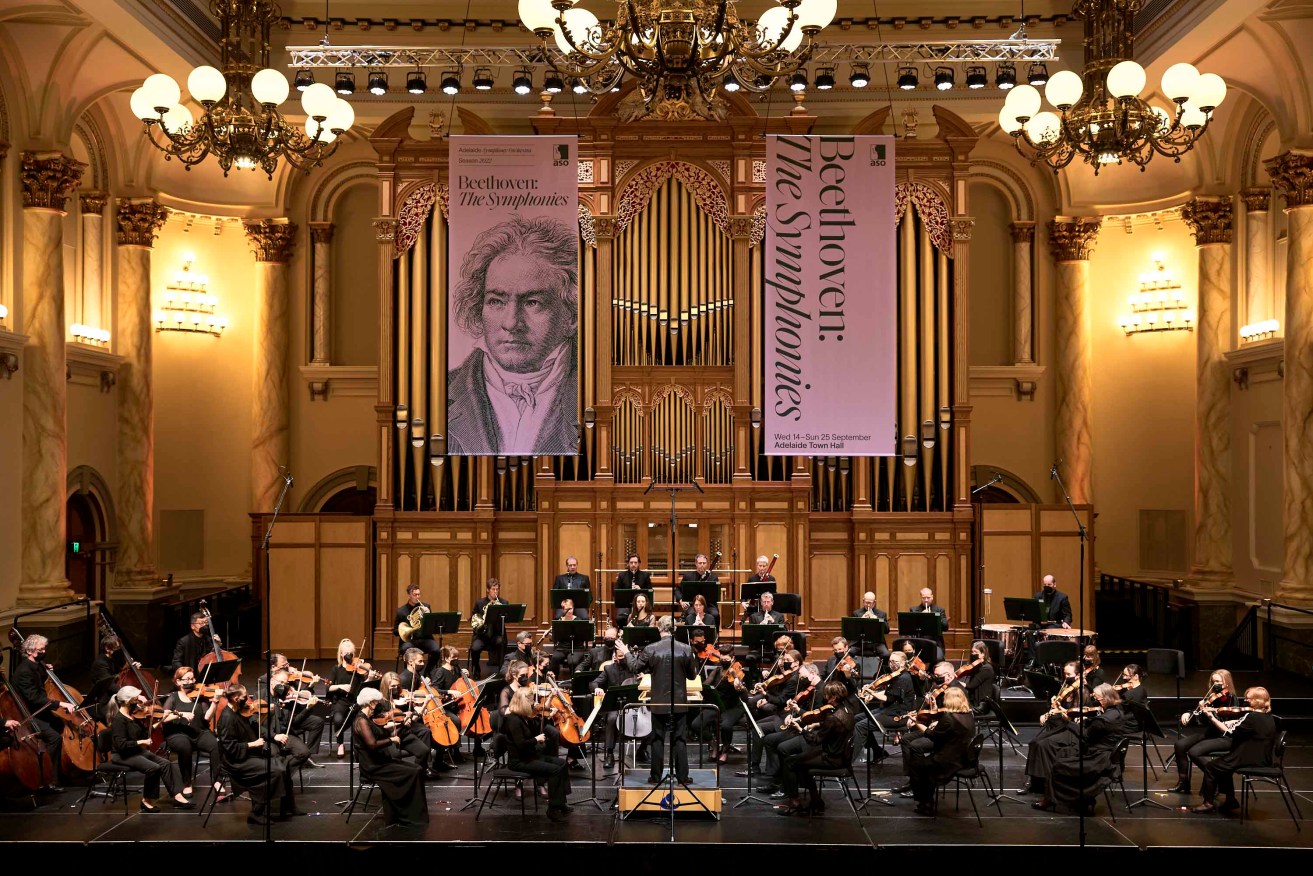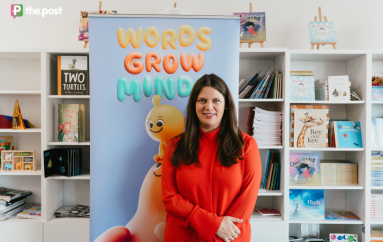Music review: ASO plays Beethoven’s symphonies 1, 2 and 3
The Adelaide Symphony Orchestra has kicked off its cycle of the complete Beethoven symphonies, with an epic performance of numbers one, two and three. Our reviewer was there to assess the beginning of the marathon of the maestro.


The ASO at its opening concert in the Beethoven symphonies cycle. Supplied image
There seem to be two reasons why the Adelaide Symphony Orchestra is presenting a ‘cycle’ of all the nine Beethoven symphonies. One is that its outgoing managing director, Vincent Ciccarello, has a particular passion for them: “Let’s not quibble: Beethoven is the greatest,” he declares.
The other is that, for visiting Scottish conductor Douglas Boyd, these symphonies represent nothing less than a personal odyssey. Earlier in his career as an oboist, he says it was a revelatory experience playing Beethoven under Nikolaus Harnoncourt in the Chamber Orchestra of Europe. Now as a conductor he is here in Adelaide conducting the cycle for a third time, after previously leading cycles in Manchester and Melbourne.
Whatever misgivings one might have about cramming a composer’s entire symphonic achievement into 10 days, we can already establish on the basis of the first concert that Boyd is exceptionally interesting when it comes to Beethoven. Here we had the first three symphonies in a single program that, while it felt ridiculously long at nearly two-and-a-half hours, was nevertheless revelatory.
Boyd’s Beethoven is taut, energised and extremely modern-sounding except that it is founded on historical performance principles that were pioneered particularly by Harnoncourt in the 1970s. Which is to say it is rhythmically incisive, clean of texture and utterly devoid of glossy smoothness.
However, Boyd goes further than Harnoncourt ever did by imparting an almost whiplash rhythmic power to Beethoven. He propels the music forward with a momentum that makes these symphonies bristle, thrust and assail the listener seemingly as never before. The revolutionary, daring Beethoven is before us in full glare.
Whether one likes it this way and not a little more restrained, or let’s say introspective, is as much a philosophical question as it is one of endurance. But one thing is certain: under Boyd and the ASO, this is Beethoven at his most excitingly vital.
Symphony No. 1 in C major, Op. 21, constantly tricks the ear with contrasts that thwart and violate one’s anticipations (the ‘wrong’ signpost of its slow, thoughtful opening, before the main theme scampers away like a terrier, being just one example); and Boyd raised these to an unprecedented degree. The tempos felt perfectly right, the energy level as tight as a fully drawn archer’s bow, and this wonderfully disciplined performance struck its target like a bullseye.
In the second movement, where the savage sforzandos and off-beats finally relent, a graceful lift brought out a more amiable side of Beethoven in this first symphony. The ASO’s thoroughly rehearsed playing was by now a complete joy to witness. The third and fourth movements were terrific like the first, tempos likewise judged right and rhythms as wicked as a meat cleaver.
Symphony No. 2 in D major, Op. 36, was nearly but not quite as successful. Boyd again impressed with his rhythmically direct approach, whereby accents are not just played made louder but possess a kind of elastic power. The opening movement again reminded one forcefully of how rhythm is such a foundational element in Beethoven’s music. Yet it did seem at times that Boyd was focusing on this at the exclusion of other elements, like lyricism: fleeting woodwind solos felt like they were poking their nose into a firestorm.
One wished there was more sense of repose in the Larghetto slow movement. Feeling rather thick and over-wrought, it fell short of capturing the gentle pastoral mood that Beethoven evokes (and which of course comes to the fore in the Sixth). Never mind, everything was redeemed thereafter: the Scherzo and Allegro molto pounced forward with enormous bite. Stravinsky appears only a step away from the extraordinary innovations that Beethoven cooks up.
With its deep pathos, one wondered if the same treatment would work in Symphony No. 3 in E flat major, Op. 55 (‘Eroica’). Well yes, it did, in the main. The principal reservation concerned tempo in the first movement: this was unusually fast and tended to mask detail in places. Beethoven marks it Allegro con brio but it felt more like a smartly vigorous Allegro vivace, right at the limit this movement can bear and not fully revealing the emotional trajectory it covers. One felt there was more gravitas to unearth.
The Marcia funebre is naturally a bigger test as far as gravitas is concerned, but this was wonderfully played and fully convincing. The mood was restrained, tempo was about perfect, and antiphonal exchanges between the first and second violins (who, following period practice, were seated opposite each other rather than adjacently) gave ample meaning to its rhetorical language. Shrouded as it is in tragedy, this pivotal movement only lacked a degree more philosophical inquiry.
Simultaneously, one could admire how Boyd has not only rehearsed the orchestra impeccably well but that he has also rebalanced its entire sound. It sounded to me that he had done several things for this first concert: he has given the concertmaster (in this concert Elizabeth Layton) a bigger role than the other strings in order perhaps to add a certain sweetness, he has made cellos a more uniform ensemble, and he has pulled the timpani back. If only other conductors could craft a sound world as carefully as this.
Also admirable was how he almost let the orchestra play under their own devices in the Scherzo, where a pervasive hushed dynamic needs less rhythmic sculpting. But the most wonderful surprise in this concert was how Boyd tackled the Eroica’s Finale. This is a set of variations based on a deliberately rather banal theme drawn from his Prometheus ballet music. However, rather than dressing it in statuesque grandness, he left it unadorned and, well, rather comical. The discovery was to find how there is so much mock seriousness and downright humour in this movement.
It is as if Beethoven unleashes a Dionysian monster in these early symphonies, and witnessing this in the hands of Boyd and the ASO was to leave one both staggered and exhilarated – if exhausted.
A touching addition to the program was the Larghetto from Elgar’s String Serenade, entirely befitting this time of mourning for Queen Elizabeth II.
Adelaide Symphony Orchestra kicked off its cycle of the Beethoven symphonies at the Adelaide Town Hall last night (September 14).
Subsequent concerts will be held on September 17, September 21 and 24-25 September. Bookings and details here.




